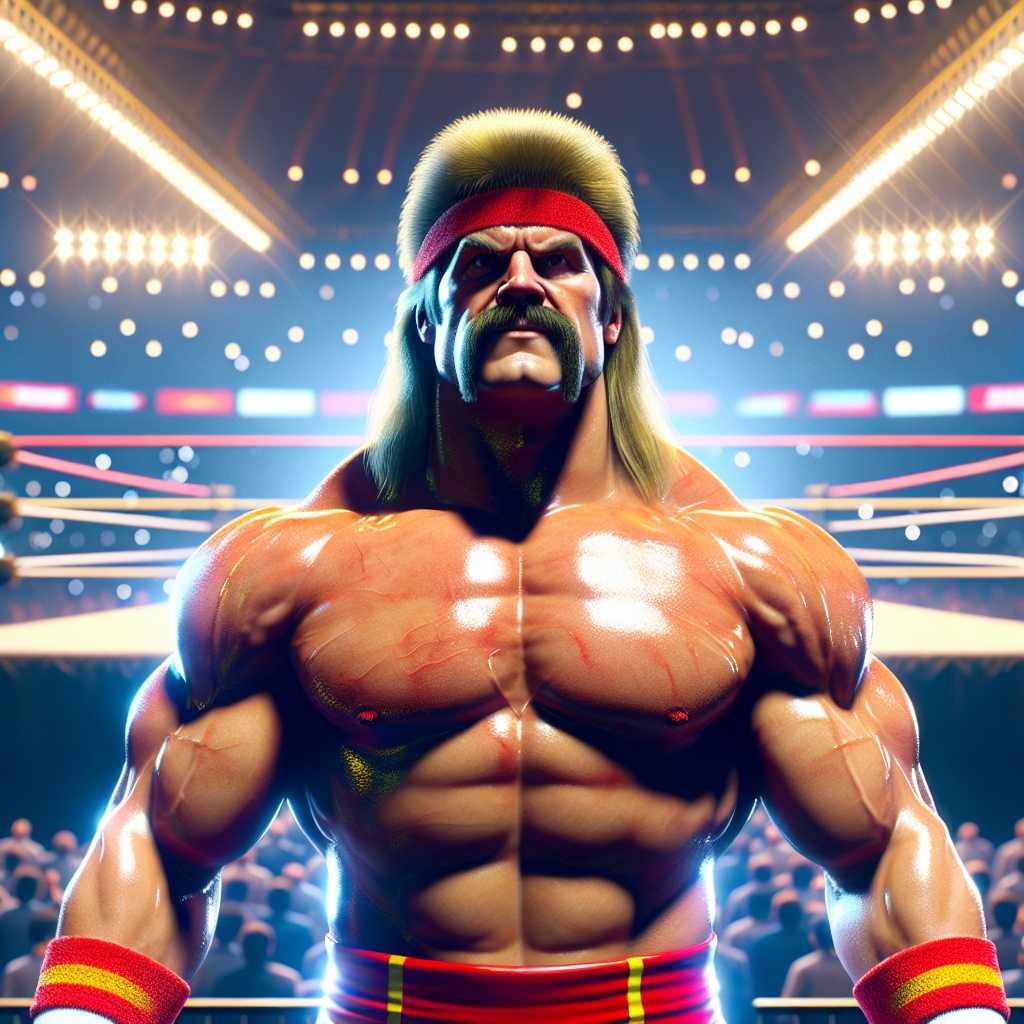The Enduring Legacy of Hulk Hogan: An Icon of Professional Wrestling
Hulk Hogan is one of the most prominent figures in the world of professional wrestling. His career, spanning several decades, represents not just a series of personal achievements but also the transformation of wrestling into a global entertainment phenomenon. This article explores Hogan’s journey from his early days in the sport to becoming a cultural icon, his impact on wrestling and beyond, and some of the controversies and challenges he has faced.
From Humble Beginnings to Wrestling Superstardom
Born Terry Gene Bollea on August 11, 1953, in Augusta, Georgia, Hulk Hogan would eventually become synonymous with professional wrestling. Beginning his career in the late 1970s, Hogan quickly became recognized for his charismatic personality, showmanship, and the signature mustache and 24-inch pythons—a reference to his massive biceps. His rise to stardom was fast within the wrestling circuits, with substantial contributions from his work with the World Wrestling Federation (WWF, now WWE) and World Championship Wrestling (WCW).
Hulkamania: A Wrestling Phenomenon
By the mid-1980s, Hulk Hogan had become the face of professional wrestling due to a phenomenon known as “Hulkamania”, a term embodying his popularity and the fervent fan following he enjoyed. Hogan’s ability to engage with fans and his portrayal as an all-American hero endeared him not only to wrestling enthusiasts but also to a broader audience that included children and families.
Hulk Hogan’s ring entrance to “Real American,” his unmistakable red and yellow attire, and trademark catchphrases such as “What’cha gonna do when Hulkamania runs wild on you?” became integral aspects of popular culture.
Championship Reigns and Key Rivalries
Hogan’s status was anchored by multiple championship reigns. In the WWF/WWE, he captured the WWF World Heavyweight Championship on multiple occasions. His most renowned matches involved epic rivalries with fellow wrestlers including Andre the Giant, “Macho Man” Randy Savage, and The Ultimate Warrior. He was also pivotal in successful events such as WrestleMania III, where he infamously body-slammed Andre the Giant—a moment cited as iconic within wrestling folklore.
Moving into WCW in the mid-1990s marked another career-defining moment for Hogan. In stark contrast to his well-established persona as a hero, Hogan turned into a villain by forming the New World Order (nWo), a departure that reinvigorated his career and played a vial role during the infamous Monday Night Wars between WCW and WWF.
Acting Career and Entrepreneurial Ventures
Parallel to his wrestling fame, Hulk Hogan also pursued an acting career. His most noteworthy acting role came from starring in “Thunder in Paradise”, but he also made appearances in movies like “Rocky III” where he played the character “Thunderlips”, “No Holds Barred”, and reality television with “Hogan Knows Best”. Moreover, he ventured into other businesses such as merchandise lines, video games voiceovers, and his own website hosting service known as Hostamania.
Philanthropy and Public Life
Outside of entertainment and business pursuits, Hulk Hogan has been involved in philanthropy work. He frequently visited children’s hospitals and has been involved with numerous charities that aid children.
Controversies and Setbacks
No examination of Hulk Hogan’s public life would be complete without noting several controversies he has encountered. In particular, Hogan faced legal issues around a leaked private videotape that led to a significant lawsuit against Gawker Media. Additionally, comments made on this tape that were of a racially disparaging nature led to profound criticism; WWE severed ties with Hogan temporarily as a result.
Furthermore, Hogan has wrestled through multiple serious injuries over the years, testament to both the physical toll of professional wrestling and his commitment to entertaining fans.
Component Encounters and Return to Public Favor
Despite such controversies, Hulk Hogan has made strides to return to public favor in recent years. An example includes reclaiming ties with WWE wherein both parties decided on resolutions; WWE reinstated him into the WWE Hall of Fame later cementing their revised relationship—showcasing an understanding that individuals can redeem themselves.
Notes
Image description: An image featuring Hulk Hogan inside a wrestling ring during one of his famous matches. He can be seen wearing his characteristic red headband with matching wristbands, rippling muscles tensed in readiness for combat with an opponent just out of frame. The background is a blur of bright lights and cheering crowds, encapsulating the height of “Hulkamania”.

